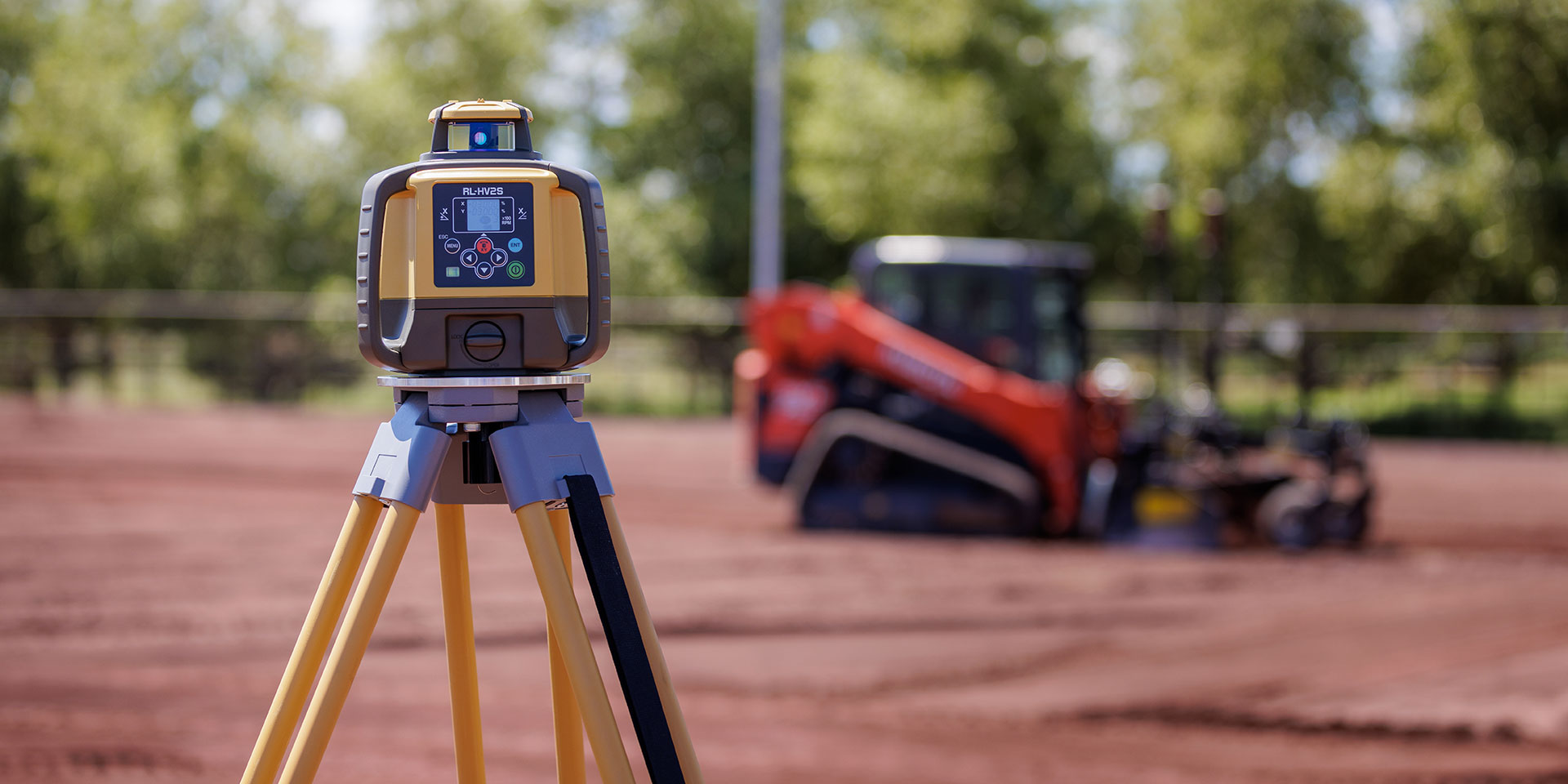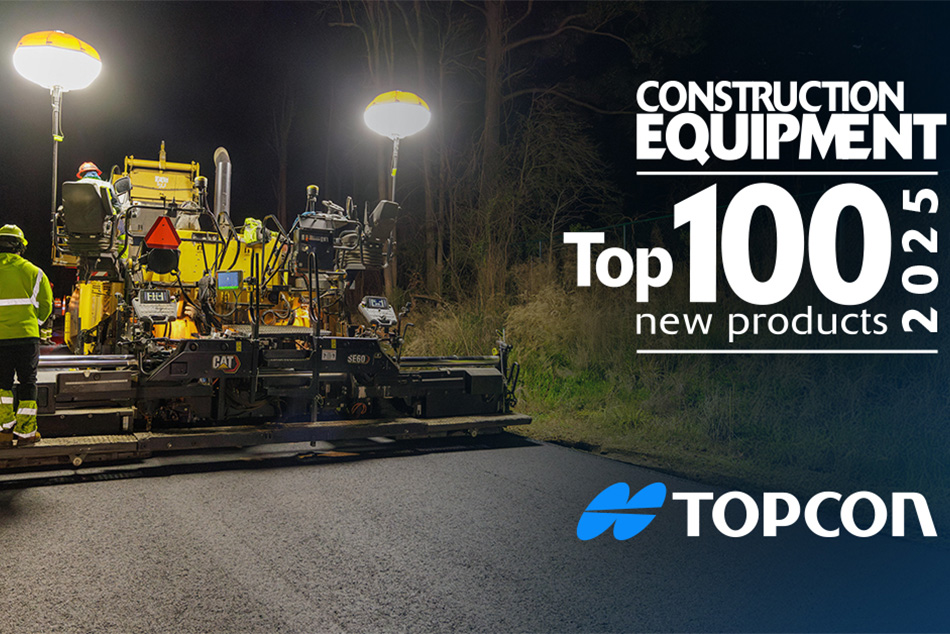There are those for whom size — at least, the size of their company — really matters. Growth, at all costs, is their driving force, sometimes to the detriment of the company itself. Mike Sweeter is not one of those people. The Flagstaff, Arizona grading and excavation specialist has built a very nice business for himself with a staff of less than half a dozen people. Today, in fact, his payroll numbers only four (including Sweeter himself) and he could not be happier — nor busier. The source of his contentment stems largely from the recent addition of a machine control solution for his Level Best-equipped compact track loader (CTL). That system, 2D-MC from Topcon Positioning Systems, and the benefits it provides, will allow him to add to his company’s bottom line without staffing up. In a sense, growth without growth. Nothing could be sweeter.
Literally Sidetracked
Despite their relative newness as an established company, Sweeter Excavating and Mike Sweeter in particular, bring decades of expertise to the table. With the exception of a Great Recession-fueled career diversion, excavation has long been in his blood.
“I started in this field with my own company, Northern Arizona Excavating, and did that for about 10 years until the economic downturn in 2008 forced me to look for alternative work,” he said. “So I worked for the BNSF Railway for eight years or so. But when things started to recover, I knew I wanted to get back to doing what I love, so I started Sweeter Excavating.”
With a staff of just himself and his son, Chase, Sweeter’s startup equipment inventory was sparse and though it’s grown some since then, it has remained relatively small to this day with a total of only six major machines to handle the workload.
“We don’t need a whole lot of iron to do what we do: underground work, building pads, parking lots, etc.,” said Sweeter. “We try to focus on commercial work but also do a fair number of residential projects — all of which involve establishing grade. For the longest time, we’d been content doing things the traditional way — using stringline and a whole lot of hand work. Starting in 2021, however, I’d been talking with my Kubota dealer about ways to improve the grade control facet of our job using our compact track loader. They referred me to Rob Binder, a salesman from Branco Equipment, the dealer that handles both Topcon equipment and the Level Best line for this area. After that call, everything changed.”
“The whole thrust of Topcon 2D-MC is its ability to simplify the grading process and minimize grade checking while, at the same time, increasing accuracy.”
- Mike Sweeter
The Showroom Model
That initial visit with Binder led to a meeting in Topcon’s booth at World of Concrete ’22 in Las Vegas. There, the two discussed the ways in which equipping his Kubota CTL with a Level Best box blade running the Topcon 2D-MC solution could take his business to the next level. According to Binder, already knowing Sweeter’s projects and needs made his recommendation an easy one.
“The whole thrust of Topcon 2D-MC is its ability to simplify the grading process and minimize grade checking while, at the same time, increasing accuracy,” he said. “Because so much of what Mike told me he does revolves around grade work, I knew it was the ideal solution for him. And the system’s affordability allows users like Sweeter who typically would not invest in traditional machine control, the chance to experience its benefits. He was impressed enough that he purchased both the Level Best box blade and Topcon solution right there at the show; since then, he’s become one of the biggest proponents of the technology.”
The World in 2D
The 2D-MC solution at the heart of Sweeter’s grading effort uses a familiar rotating grade laser to “connect and host” the dual mast laser receivers on the attachment of his CTL to quickly determine both elevation and slope. A ruggedized Android-powered tablet running Topcon’s new 2D-MC software is used to set design options and immediately control the grade of the CTL’s attachment from within the cab.
The system includes automatic hydraulic control to eliminate human error and the need for rework, while graphical arrows on the tablet allow the operator to progressively increment/ decrement and reach grade — in real time. Behind the scenes, the 2D-MC solution utilizes CAN bus connections to plug into and control using the machine’s existing joysticks.
“It’s an impressively smooth solution for these compact machines,” said Oscar Cantu, construction content manager for Topcon. “Mike or his son Chase can arrive onsite, take the machine off the low-boy and, after gathering points for existing grade, sit in the cab and design what’s needed, then move right into grading. Working more effectively with compact machine control solutions like this empowers any contractor to complete more projects — more accurately — on the same day.”
Sweeter is using the 2D solution on a Kubota SVL75-2 compact track loader equipped with a Level Best PD Series Dual Mast grading box. At a recent project in Flagstaff, he put it to work correcting grade for a loading dock area and the benefits became immediately apparent.
“This was the shipping and receiving area for a major manufacturer,” he said. “Over the years, the area had developed some serious low spots that were creating drainage issues and would freeze in winter, making them something of a safety hazard. So the entire area was slated for a major rehab. Because the project featured multiple slopes and grade accuracies were critical, it was perfect for the new grading system.”
“Just based on the increase in productivity and material savings, I’d say the system will pay for itself in our first year of use — maybe sooner. It’s made that much of an impact on the operation. We can’t imagine doing a job now without it.”
- Mike Sweeter
Holding Tight
Sweeter said there was virtually no learning curve needed to become efficient with the new system, though Branco’s Rob Binder handling the initial setup was a huge help. “Both Rob and Kevin Strand, a vice president at Branco, have been outstanding for us,” he said. “And that commitment has lasted well beyond the installation phase. They call on us regularly and are always available to answer any questions we have — I can’t say enough about that.”
At the Flagstaff project, Sweeter said the 2D-MC’s ability to maintain tight grade tolerances — generally within ¼” — is critical, particularly as material costs and availability continue to play a role in today’s economic climate.
“These are challenging times, for sure,” he said. “Up here in Flagstaff, everything is shot rock, so suppliers have to blast, crush and screen material to get their Class AB, making it a much costlier product. The same holds true for concrete, which is not just currently expensive, it is also in short supply. All that makes maintaining a tight grade all the more important. A tenth of a foot low on 4,000 sq. ft. is a lot of extra material. The accuracy of the system meant there would be a uniform 9” of concrete put down — no more, no less, no surprises.”
Hassle-free Checking
As mentioned, before adding the new grading solution, Sweeter Excavating’s work involved a good deal of time-consuming, manual grade checking, a process that Sweeter’s son Chase said he is glad to put behind them.
“Our grading operation is much more efficient now,” he said. “The new system removes the need for continually getting in and out of the machine for grade checking and, at the same time, eliminates any guesswork. I can get in the loader at the start of the day and not have to get out again until I want to, so productivity is definitely up.”
The senior Sweeter concurs, citing the range of benefits they’ve seen since making the switch to machine control. “We were told to expect upticks in efficiency, speed, and accuracy, with a resultant lowering of costs and we’re getting all of those,” he said. “We can finish a pad off much quicker with tighter tolerances and we’ve eliminated the risk of losing money to an incorrect grade. As to how much faster, when I consider that we used to need two or three men with stringline to manually lay out grade — a lengthy process — and one man does it now with the machine, the grading process is probably 75% quicker than before. I’d say we got all we were promised and more.”
Payback Time
Circling back to that initial discussion about growth, there is no questioning Sweeter’s commitment to remaining a smaller operation, nor is there doubt in his mind that there’s room for added opportunities.
“I’m happy with where we are, with the volume of work we have, and the outstanding crew I currently have, which includes my son Chase, along with operators Josh Brooks, and Samuel Hopkins,” he said. “Staying this size makes things easier to manage and ensures that the level of quality remains high which, along with job site safety, is always key for us. However, this grade control system allows us to stay a smaller company yet tackle larger projects than ever before and do as much work as a larger-staffed one — if not more. It’s a great advantage to have.”
Though the cost of machine control solution on his CTL is a fraction of what it would be for a system on a full-sized bulldozer system, Sweeter acknowledges it was still a decent expenditure for a smaller company like his. That will be offset, however, by what he foresees as a quick return on his investment.
“Just based on the increase in productivity and material savings, I’d say the system will pay for itself in our first year of use — maybe sooner. It’s made that much of an impact on the operation. We can’t imagine doing a job now without it.”
















